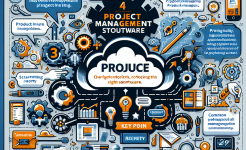The IPD (Integrated Product Development) R&D management system has been widely adopted by many enterprises in recent years. It emphasizes cross - functional integration, concurrent engineering, and early market orientation. Cost control within the IPD R&D management system is of crucial significance. Not only does it directly impact the profitability of new product development projects, but it also affects the competitiveness of products in the market. Effective cost control strategies can help enterprises optimize resource allocation, improve development efficiency, and ensure that new products meet market demands while maintaining cost - effectiveness.
Cost control in the IPD context is different from traditional methods. In the traditional R&D process, cost management often focuses on cost reduction during the production phase. However, in the IPD system, cost control needs to be considered from the very beginning of the concept generation stage, covering all aspects of the product life cycle, including design, development, procurement, production, and after - sales service. This holistic approach requires a comprehensive understanding of the cost drivers and the establishment of appropriate control mechanisms at each stage.
Moreover, the IPD R&D management system involves multiple departments working together, such as R&D, marketing, procurement, and manufacturing. Coordinating cost control efforts among these departments is a complex task. Each department may have different priorities and perspectives on cost. For example, the R&D department may focus on product performance and innovation, while the procurement department may be more concerned with material costs. Therefore, a unified cost control strategy is needed to align the goals of all departments and achieve overall cost optimization.
Cost Control in the Concept Generation Stage
The concept generation stage is the foundation of product development in the IPD system. At this stage, accurate market research and customer needs analysis are essential for cost control. Understanding what customers really want and are willing to pay for can help enterprises define the product features and functions more precisely. By avoiding unnecessary features that may increase costs without adding significant value to customers, enterprises can set a reasonable cost target from the start.
For example, through in - depth market surveys, interviews, and data analysis, a company may find that customers in a particular market segment prioritize basic functionality and price - effectiveness over advanced but rarely - used features. Based on this understanding, the product concept can be designed to focus on meeting these core needs, thus reducing potential costs associated with developing and integrating complex features.
In addition, at the concept generation stage, it is necessary to involve cross - functional teams. The R&D, marketing, and finance departments should work together to evaluate the cost implications of different product concepts. The marketing team can provide insights into market price expectations, the R&D team can estimate the technical complexity and associated costs, and the finance team can conduct a preliminary cost - benefit analysis. This collaborative approach ensures that the selected product concept is not only market - viable but also cost - feasible.
Furthermore, setting a clear cost target at this stage serves as a guiding principle for subsequent development activities. It provides a benchmark against which all cost - related decisions can be evaluated. If the initial cost target is not well - defined, there is a risk of cost overruns during the development process as different departments may not have a clear understanding of the overall cost constraints.
Cost Control in the Design and Development Stage
The design and development stage is where many cost - determining factors are established. Design for manufacturability (DFM) and design for assembly (DFA) are important strategies in this stage. DFM focuses on ensuring that the product design can be efficiently manufactured with minimal cost. This includes considerations such as the choice of materials, the simplicity of the manufacturing process, and the use of standard components.
For instance, when designing a new electronic device, choosing materials that are readily available and have a lower cost without sacrificing product performance can significantly reduce material costs. At the same time, simplifying the product structure to make it easier to assemble can reduce labor costs and assembly time. By implementing DFM principles, enterprises can avoid costly design changes during the production phase.
In the development process, strict project management and control are also crucial for cost control. This involves setting up a detailed project plan with clear milestones and budget allocations for each stage. Regular project reviews should be conducted to monitor progress and costs. If there are any deviations from the plan, timely corrective actions should be taken. For example, if the development of a certain module is taking longer and costing more than expected, the project team needs to analyze the reasons and adjust the plan, such as reallocating resources or modifying the technical approach.
Another aspect is the management of intellectual property (IP) costs. In the R&D process, protecting IP is necessary, but it also incurs costs such as patent application fees and legal fees. Enterprises need to balance the need for IP protection with cost considerations. They can conduct a cost - benefit analysis of different IP protection strategies, such as determining whether to file for a patent in a particular market based on the potential market size and the cost of patent protection.
Cost Control in the Procurement and Production Stage
In the procurement stage, establishing strong supplier relationships is key to cost control. By working closely with suppliers, enterprises can negotiate better prices, favorable payment terms, and ensure the quality of raw materials and components. Long - term partnerships with reliable suppliers can also lead to cost savings through volume discounts and joint cost - reduction initiatives.

For example, a manufacturing company may collaborate with a key component supplier to jointly develop new manufacturing processes that can reduce the cost of the component while maintaining its quality. Through continuous communication and cooperation, both parties can achieve mutual benefits, with the buyer getting a lower - cost component and the supplier increasing its business volume.
During the production stage, lean manufacturing principles can be applied to eliminate waste and improve production efficiency. Lean manufacturing focuses on reducing non - value - added activities such as overproduction, inventory holding, and unnecessary processing steps. By implementing just - in - time (JIT) production systems, enterprises can minimize inventory costs and improve cash flow.
For instance, a furniture manufacturing company may adopt JIT principles to receive raw materials and components just in time for production, reducing the need for large - scale inventory storage. This not only saves storage space and associated costs but also reduces the risk of inventory obsolescence.
In addition, quality control during the production process is essential for cost control. High - quality products can reduce the costs associated with rework, scrap, and customer returns. By implementing strict quality management systems, such as Total Quality Management (TQM), enterprises can ensure that products meet or exceed quality standards from the start, thus avoiding costly quality - related issues downstream.
Cost Control in the After - sales Service Stage
The after - sales service stage also has a significant impact on overall product costs. Providing efficient and cost - effective after - sales service can enhance customer satisfaction and loyalty, but it also needs to be managed carefully to control costs. One way is to design products for easy maintenance and repair. By using modular designs and standard components, it becomes easier and cheaper to replace faulty parts.
For example, in the automotive industry, some car manufacturers design their vehicles with modular components, such as engine modules and electrical systems. This allows mechanics to quickly identify and replace defective parts, reducing the time and cost of repairs. At the same time, it also enables the manufacturer to stock a smaller inventory of spare parts, further reducing costs.
Another aspect is the management of warranty costs. Enterprises need to accurately estimate warranty costs during the product development stage and take measures to reduce them. This can include improving product quality during the manufacturing process, providing clear product usage instructions to customers to prevent misuse, and setting up an efficient warranty claim processing system.
For instance, a consumer electronics company may invest in improving the quality of its products through better component selection and more rigorous testing. This can reduce the number of warranty claims. Additionally, by streamlining the warranty claim process, the company can reduce administrative costs associated with handling claims.
Finally, after - sales service can also be an opportunity for cost - effective product improvement. Feedback from customers regarding product performance and problems can be used to identify areas for improvement in future product versions. This proactive approach can help prevent similar issues from occurring in new products, reducing the overall cost of product development and after - sales support in the long run.
Conclusion
In conclusion, cost control under the IPD R&D management system is a complex but essential task for enterprises. It requires a comprehensive and systematic approach that covers all stages of the product life cycle, from concept generation to after - sales service. At each stage, different cost control strategies need to be implemented, and cross - functional collaboration is crucial.
By effectively controlling costs in the concept generation stage, enterprises can set a reasonable cost target and ensure that the product concept aligns with market needs and cost constraints. In the design and development stage, strategies such as DFM, DFA, and strict project management can help reduce costs while maintaining product quality and performance. During the procurement and production stages, strong supplier relationships, lean manufacturing principles, and quality control measures can lead to significant cost savings. And in the after - sales service stage, proper management of maintenance, warranty costs, and product improvement based on customer feedback can enhance customer satisfaction and also contribute to overall cost control.
Enterprises that can master and implement these cost control strategies in the IPD R&D management system will be better positioned to gain a competitive edge in the market. They can develop high - quality products that meet customer needs at a reasonable cost, improve profitability, and ensure long - term sustainable development. However, cost control is not a one - time task but an ongoing process that requires continuous monitoring, evaluation, and adjustment as the market environment, technology, and customer needs change.
ARTICLE TITLE :Discussion on cost control strategies under the IPD R&D management system ,AUTHOR :ITpmlib

















